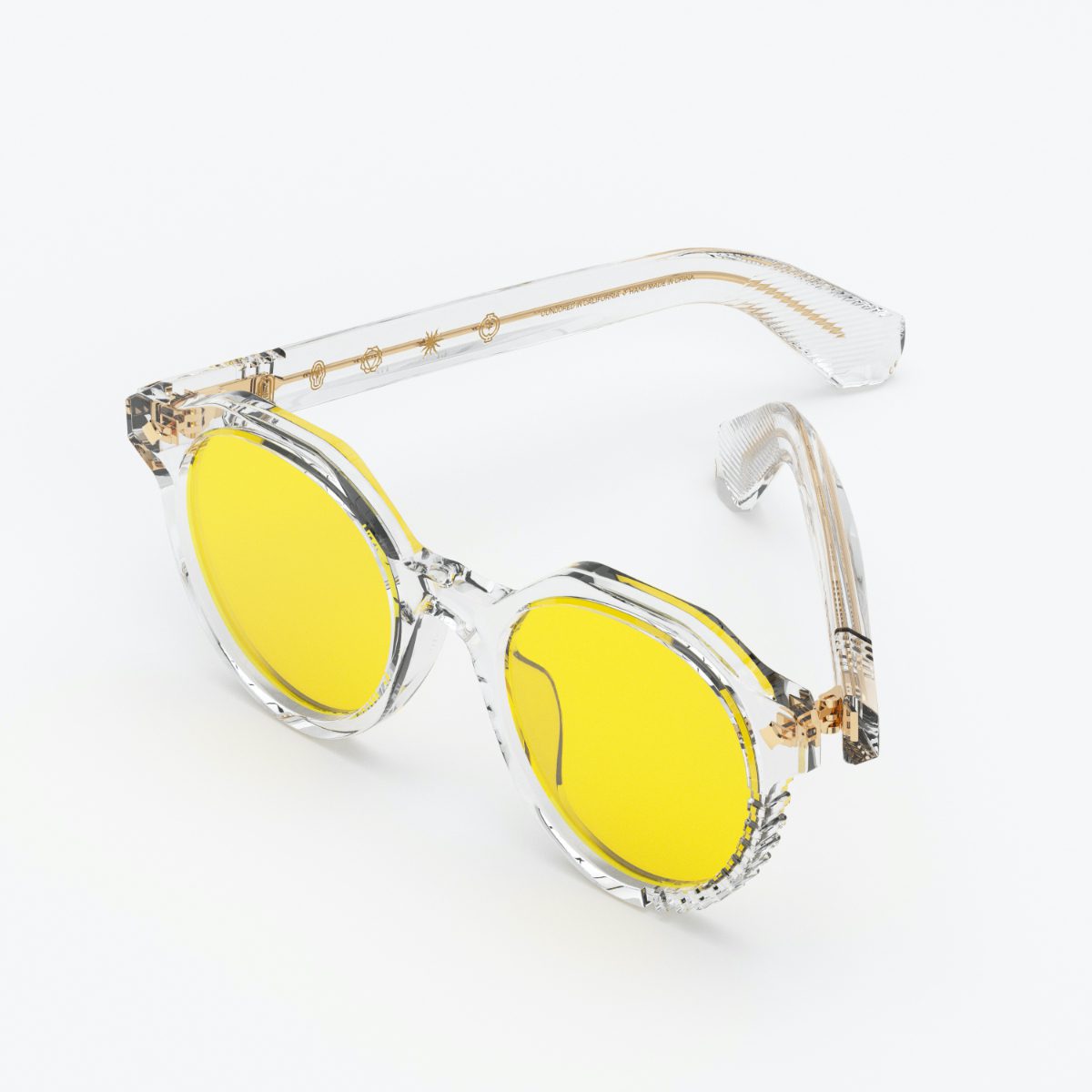Austin Soldner and Michael Schaecher, the co-founders of the new sunglasses brand Futuremood, met at the newly formed San Francisco research and development lab created by the high-end audio tech developer Bose.
The two were tasked with working on Bose’s sunglasses wearable and bonded over a shared interest in sneakers and fashion. Over many conversations the two men realized there was an opportunity to use technology to rewrite the sunglasses playbook and launch the first new brand to the market since Oakley came on the scene.
There was also an opportunity to bring the materials science and tech-forward strategies that sneaker companies have developed to an industry that hadn’t seen any real technical revolutions in decades.
Enter Futuremood “Auras,” which the company bills as the first glasses scientifically tested and proven to alter your mood.
Using technology developed by the lens manufacturer Zeiss, Futuremood’s first glasses come in four colors — a relaxing green, a refreshing blue, an energizing red and a focusing yellow. The company is launching its eyewear in two styles, a boxy, chunky frame and a more traditional rounded frame.

Image Credits: Futuremood (opens in a new window)
Any mood-altering effects are thanks to Zeiss’ halochrome lens technology, which the lens manufacturer has been working with — and publishing papers on — to suss out the science behind its claims that the use of filtered light can change the way folks feel.
There’s some preliminary research that the company has done, but the science is still largely unproven (Zeiss conducted two studies at European universities).
Schaecher and Soldner are believers, and the two longtime tech execs see these lenses as a window into a wider world of material science experimentation and product development that they’re hoping to bring to market with Futuremood.
“If you think about sneakers and where Nike and Adidas got to where they are today, it was through innovation in product design and materials and branding and marketing and all of that had been missing from the sunglasses space,” Schaecher said.
The second marketing hire at Airbnb and the first marketing hire at the now-defunct Munchery, Schaecher knows a thing or two about branding. Meanwhile, Soldner, the founder of Playground.fm, and a former product designer at Jawbone, is the technical expert and lead designer for all of Futuremood’s frames.
“We really saw an opportunity to push the envelope in technical innovation and product innovation,” said Schaecher. “We have a backlog of stuff to push the envelope of what sunglasses are.”
One thing sunglasses are is a very very big business. Consumers spent $14.5 billion on sunglasses in 2018, according to the market research firm, Grand View Research.
If Futuremood can capture even a fraction of that market with its unique spin on sunglasses, it’ll be in good shape.
As with any good direct to consumer product, Futuremood’s difference begins with its packaging. Tapping in to the mood-altering “wearable drugs” aesthetic, the company’s product is packaged in boxes with the same bright hues as the sunglasses. Inside there’s a cloth to clean the glasses, a velvet pouch to hold them and a scented pack of incense matches and a vaguely tarot-esque card with information about the glasses and the sensation they’re meant to evoke (there’s even a Spotify playlist to listen to).
In an email, Schaecher described the sensation as “not as subtle as CBD, but not as strong as a shot of tequila or glass of Rosé.
“Austin and I are really into different ways of self care and taking moments and… we thought there was an opportunity to bring delight and joy,” with the packaging, Schaecher said. “We don’t expect people to be firing up Spotify playlists and incense matches every time they wear things.”
Futuremood has been mostly bootstrapped to date, and like everything else in the year of our Lord 2020, the company’s plans were pushed back by the coronavirus pandemic.
“Our lenses are made in Zeiss’ Italian factory and the glasses were made outside of Shenzhen,” said Schaecher. “We quarantined the first order for two weeks. Zeiss was right in that region of Italy that was getting hit hard. We’ve been delaying since then. It’s hard to put into words what it’s like to grind on something for eighteen months… and then have to delay launching.”
Even with the pandemic, though, the company moved ahead with the design for its second product, and that gives a hint for where Schaecher and Soldner want to go with their business. “We have our second product line and that is not mood-altering glasses,” said Schaecher. “That’s a traditional sunglasses line that uses titanium alloy metals that are more commonly seen in aerospace than in eyewear.”
The design aesthetic is also more in the luxury vein, which Schaecher teased was akin to something that would be more at home in a Cartier showroom rather than a direct to consumer brand’s digital storefront.
Right now, the company is going direct to consumers through its website, but it’s looking at the potential for some retail collaborations and field marketing when the country opens back up for business.
As for the mood-altering effects and whether “wearable drug” can win market share, Schaecher is pretty optimistic. “People definitely have reactions,” he said. “It’s a fun, new thing that’s never existed before.”

Image Credits: Futuremood
Source: Tech Crunch


